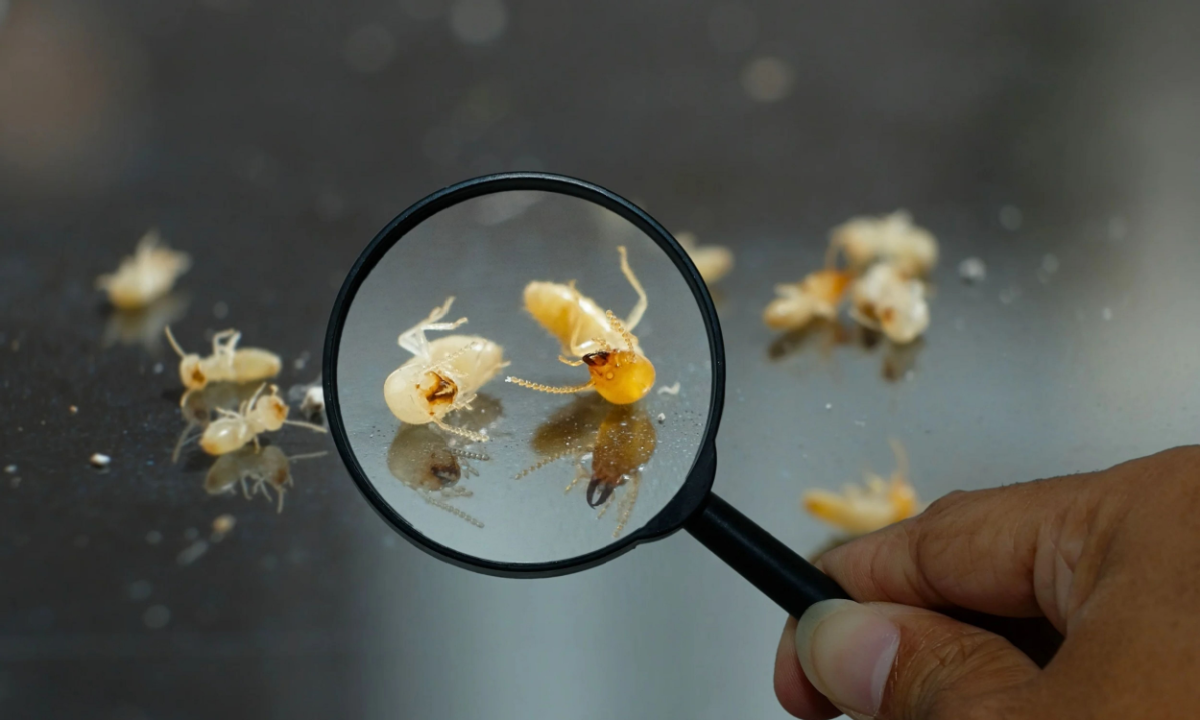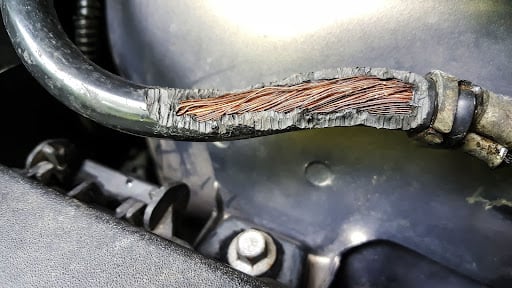As Winter settles in New Jersey, several insect populations will significantly diminish due to the cold weather and lack of resources. Bees, wasps, mosquitos, flies, and countless others practically vanish after the first freeze, making for a seemingly pest-free landscape.
However, not all insects go out without a fight; instead of perishing in the cold, several species of overwintering bugs opt to migrate to warmer locations to fare the Winter. Unfortunately for homeowners, the warmest, driest, and most convenient location for winter pests, like the New Jersey rodent, lies within your walls.
One of the most prevalent pests you’ll note in the Wintertime is the brown marmorated stink bug–a smelly little insect known for the foul-smelling liquid secreted when threatened, making for an unsatisfactory cleanup anytime they’re moved, squished, or startled. Considered an invasive species in New Jersey, these bugs can be a real pest to deal with.
The following article will cover everything you need to know about the brown marmorated stink bug, including their common identifiers, preferred habitats, and how to rid your home of them effectively!
Overview: What Exactly Are Stink Bugs?
Also known as shield bugs, stink bugs are a member of the Pentatomidae family of insects, belonging to the order Hemiptera.
In total, there are over 4700 species of shield bugs worldwide. However, only approximately 20 species are present in New Jersey; of these 20 species, you’ll likely only encounter one: the brown marmorated stink bug.
Native to Japan, this specific species first migrated to the Eastern US aboard container ships in the 1990s. Since then, the brown marmorated stink bug population has grown to overwhelmingly large populations, often seen infesting homes in the Winter months.
Brown marmorated stink bugs have some easy identifiers, separating them from other common overwintering insects in New Jersey. These insects feature a distinctive, shield-shaped body that’s both flat and wide, allowing them to squeeze into tight openings and cracks.
In addition, these insects generally feature a mottled gray/brown abdomen with long antennae, which, along with their legs, feature white banding between the joints.
Besides their physical appearance, brown marmorated stink bugs have developed a unique method of self-defense in which they secrete a pungent liquid from their abdomens. Originally intended to ward off lizards, birds, and other predators that liked to make a quick meal out of them, this liquid may also be secreted when the insects are threatened by humans or squished by a tissue (yuck).
Are Brown Marmorated Stink Bugs Harmful to Humans?
While they can make a big, stinky mess, stink bugs aren’t inherently harmful to you or your family. For example, they aren’t known to bite humans and won’t destroy your home like termite damage.
Besides their unpleasant stink and the unwelcome nature of their routine Winter home invasions, you don’t have to worry if you spot a stink bug indoors.
However, it is essential to note that if your pet consumes a brown marmorated stink bug, the insect’s secretions may cause your cat/dog to drool excessively or regurgitate.
Why Are Brown Marmorated Stink Bugs a Problem?
While these insects don’t cause any immediate harm to humans or homes, they tend to be viewed as a nuisance by most homeowners; after all, who wants an infestation of stinky insects?
Besides their mere presence and smell, stink bugs also possess long, straw-like mouth parts to suck the juices from fruits and vegetables, causing immense damage to orchards and crops if given a chance. However, this isn’t generally a concern in the Winter or to average homeowners.
How to Get Rid of Brown Marmorated Stink Bugs.
Since stink bugs tend to overwinter in large numbers, it’s not uncommon to notice a serious infestation in late Fall or early Winter. You can’t simply squish or pick up these insects without risking exposure to their smelly secretions.
Removal and disposal of these insects require special care. So try the following tips/methods:
Vacuuming
One of the most effective methods of stink bug removal is to use a vacuum cleaner, allowing you to avoid direct contact with the insects. With this method, there are ways to prevent stinking up your household vacuum, as the bugs are likely to secrete their foul-smelling odor once inside the vacuum or deceased.
- Nylon Stockings. To begin, cut the leg off of a nylon stocking. Next, insert the closed end of the stocking into the hose attachment of the vacuum, and secure the open end using a hair tie, rubber band, or zip tie. Once secured, simply fire up the vacuum and suck up the bugs as usual! Once finished, all you need to do is remove and dispose of the insect-filled stocking!
- Use a Wet/Dry Vacuum. If you’re against using the household vacuum, consider investing in an inexpensive wet/dry vacuum. These small vacuums are incredibly handy and simple to operate/empty. With a wet/dry vac, you can even fill the vacuum’s canister with water, drowning the insects as they’re sucked in so they don’t excrete a foul smell.
Water Disposal
If vacuuming isn’t an option, stink bugs can easily be killed by sweeping them into a bucket of soapy water. However, be mindful, as this may sometimes trigger a smelly response.
Insecticide Treatments
Insecticides are also highly effective stink-bug killers, though they’re traditionally used as a last resort. For more information on insecticide use, contact your trusted local pest control experts.
Prevention
Perhaps the most effective way to rid your home of brown marmorated stink bugs is prevention. Do a thorough walk around your home, keeping an eye out for potential points of entry such as:
- Torn window screens
- Gaps in siding and trim
- Damage to attic/crawl space vent coverings
Additionally, try to keep food sources to a minimum. For example, remove fruits and vegetables from the counter, which may attract insects, and keep outdoor vegetation clean and well-kept.
Takeaways
While stink bugs aren’t likely to harm you, your family, or your pets (unless someone takes a bite out of one), they aren’t traditionally welcome additions to your household. Often coming in large numbers and reproducing rapidly, it’s important to remove and dispose of brown marmorated stink bugs accordingly. If the DIY methods listed above don’t make a considerable dent in your home’s stink bug population, don’t hesitate to contact your local stink bug exterminator at Anchor Pest Control.
FAQs
Are brown marmorated stink bugs harmful to humans?
Nope! In fact, these insects aren’t known to bite humans at all, making them both harmless and non-threatening. While they do possess long, straw-like mouth parts for piercing fruit, these appendages are tucked between their legs when not feeding and are not used for self-defense.
Are stink bug secretions poisonous?
While they may have a foul, pungent odor, stink bug secretions aren’t toxic or poisonous. However, if they happen to get in your eyes, you may experience an uncomfortable burning or stinging sensation. In rare cases, the secretions can also cause mild skin irritations, so it’s advised not to directly handle the insects.
When are you most likely to find stink bugs in your home?
While finding brown marmorated stink bugs roaming outdoors is common in the warmer months, they tend to move indoors only once the cold weather sets in. As overwintering insects, brown marmorated stink bugs like to find a warm, protected place to enter a state of diapause, often entering New Jersey homes in late fall or early winter.
If you have any issues with




